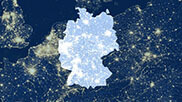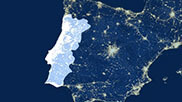The deliverable 3.1 Flexibility Toolbox is the first document to be produced under Work Package 3 – Flexibility solutions.
“The toolbox is the first key step to assess the flexibility of distributed energy resources technologies for providing grid support. The technologies assessed in this toolbox are grouped according to their technical/technological attributes in order to identify the potential of a technology to solve a problem in a given time and location (flexibility at short, medium or long term, installation at customer, distribution or transmission level). The main attributes of each technology will also be evaluated according to the location and flexibility needs of the DSO, in order to be able to cover all the solutions to be provided at European level.”
Deliverable 3.1 – Flexibility Toolbox
Energy related emissions account for almost 80% of the EU’s total greenhouse gas emissions. The energy challenge is therefore one of the greatest tests which Europe has to face. Transforming the energy system towards a sustainable, net-zero and climate-friendly economy by putting consumers at its centre can increase efficiency of the energy system and strengthen social welfare. To enable this transformation, distribution grids will face new paradigms in the ways they operate by relying more on flexibility and smart-grid functionalities to safely and cost-effectively integrate more variable renewable energy sources (RES). Future complex energy system will require strong and smart flexible resources to adjust new demand profiles to the supply variations in renewable generation.
EUniversal project aims to enable the transformation of the electricity grid by resolving existing limitations in the energy system through the introduction of a universal market enabling interface called UMEI. The concept brings forward a universal, open, adaptable and modular approach to interlink active system management with electricity markets and foster the provision of flexibility services.
This document aims to design a flexibility toolbox by identifying the technologies and solutions most suitable to providing flexibility services to the distribution grid.
The goal of this deliverable is to map the most promising technologies providing flexibility services such as energy storage (mechanical, electrochemical, electrical, power-to-heat, power-to-gas); digital solutions and technologies enabling demand response; flexible thermal generation, smart charging and other ancillary services provided by EVs, active power control of RES, etc. The mapped technologies are grouped according to their technical attributes: flexibility at short, medium or long term; installation at customer, distribution and transmission level. As a result, the document provides a toolbox with the main attributes of each technology and systems for different locations and flexibility needs to be identified by the relevant DSOs.






